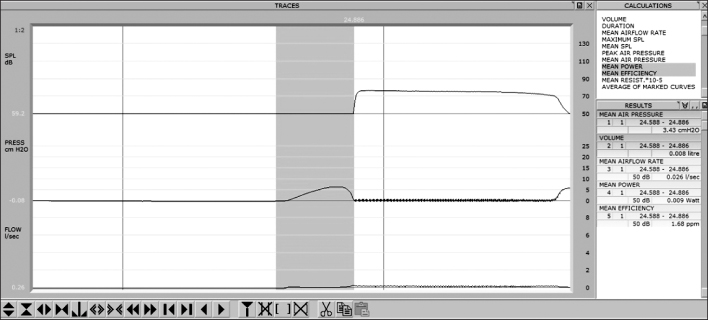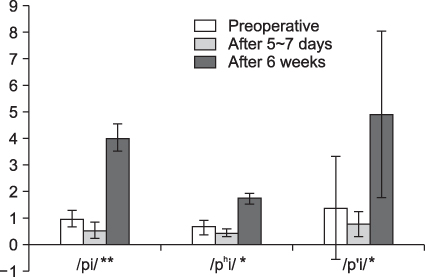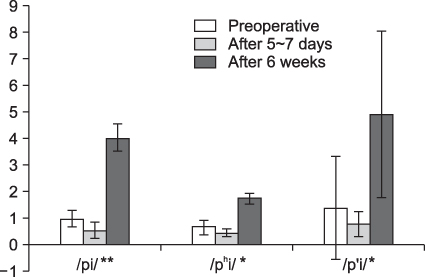J Korean Thyroid Assoc.
2014 May;7(1):1-6.
A Refutation against Unfounded Reports on Thyroid Cancer
- Affiliations
-
- 1Division of Endocrinology & Metabolism, Department of Medicine, Thyroid Center, Samsung Medical Center, Sungkyunkwan University School of Medicine, Seoul, Korea. thyroid@skku.edu
Abstract
- The incidence of thyroid cancer has been increasing in Korea as well as in many countries. This is mainly due to the early detection of papillary thyroid microcarcinoma less than 1 cm in diameter with a high-resolution ultrasonography. Because of the unique Korean medical environment, its incidence is abruptly increasing in Korea. Many experts have emphasized that the early detection cannot completely explain the observed increase in thyroid cancer. Therefore, other possible explanations should be explored. Unnecessary diagnosis and excessive treatment should be avoided. If unreasonable regulations are applied, they could do more harm than good. In terms of screening efficacy, the National Evidence-based Healthcare Collaborating Agency in conjunction with Korean Thyroid Association concluded in 2013 that evidence was insufficient to recommend for or against ultrasonography screening for thyroid cancer. If a patient incidentally finds a tumor on the thyroid, a physician should manage the patient according to the guidelines. The guidelines should be developed based on evidence-based medical decisions for patients, not on economic efficacy.
Keyword
MeSH Terms
Figure
Reference
-
References
1. Hong KH, Kim YK. Phonatory characteristics of patients undergoing thyroidectomy without laryngeal nerve injury. Otolaryngol Head Neck Surg. 1997; 117(4):399–404.
Article2. Meek P, Carding PN, Howard DH, Lennard TW. Voice change following thyroid and parathyroid surgery. J Voice. 2008; 22(6):765–772.
Article3. Maeda T, Saito M, Otsuki N, Morimoto K, Takahashi M, Iwaki S, et al. Voice quality after surgical treatment for thyroid cancer. Thyroid. 2013; 23(7):847–853.4. Franco RA, Andrus JG. Aerodynamic and acoustic characteristics of voice before and after adduction arytenopexy and medialization laryngoplasty with GORE-TEX in patients with unilateral vocal fold immobility. J Voice. 2009; 23(2):261–267.
Article5. Dursun G, Gokcan MK. Aerodynamic, acoustic and functional results of posterior transverse laser cordotomy for bilateral abductor vocal fold paralysis. J Laryngol Otol. 2006; 120(4):282–288.
Article6. Lombardi CP, Raffaelli M, D\'Alatri L, Marchese MR, Rigante M, Paludetti G, et al. Voice and swallowing changes after thyroidectomy in patients without inferior laryngeal nerve injuries. Surgery. 2006; 140(6):1026–1032. discussion 32-4.7. Piccirillo JF, Painter C, Fuller D, Fredrickson JM. Multivariate analysis of objective vocal function. Ann Otol Rhinol Laryngol. 1998; 107(2):107–112.
Article8. Zhang Y, Jiang JJ. Acoustic analyses of sustained and running voices from patients with laryngeal pathologies. J Voice. 2008; 22(1):1–9.
Article9. Wolfe V, Martin D. Acoustic correlates of dysphonia: type and severity. J Commun Disord. 1997; 30(5):403–415. quiz 15-6.
Article10. Sonesson B. Vocal fold kinesiology. In: Grillner S, Lindblom B, Lubker J, Persson A, editors. Speech motor control. Oxford: Pergamon; 1983. pp. 113-117.11. Solomon NP, Garlitz SJ, Milbrath RL. Respiratory and laryngeal contributions to maximum phonation duration. J Voice. 2000; 14(3):331–340.12. Dart SN. An aerodynamic study of Korean stop consonants: measurements and modeling. J Acoust Soc Am. 1987; 81(1):138–147.
Article13. Hartl DM, Hans S, Vaissiere J, Brasnu DF. Laryngeal aerodynamics after vocal fold augmentation with autologous fat vs thyroplasty in the same patient. Arch Otolaryngol Head Neck Surg. 2005; 131(8):696–700.
Article14. Hong KH, Kim HK, Niimi S. Laryngeal gestures during stop production using high-speed digital images. J Voice. 2002; 16(2):207–214.
Article15. Hong KH, Kim HK. Electroglottography and laryngeal articulation in speech. Folia Phoniatr Logop. 1997; 49(5):225–233.
Article16. Isshiki N, Shoji K, Kojima H, Hirano S. Vocal fold atrophy and its surgical treatment. Ann Otol Rhinol Laryngol. 1996; 105(3):182–188.
Article17. Solomon NP, Helou LB, Stojadinovic A. Clinical versus laboratory ratings of voice using the CAPE-V. J Voice. 2011; 25(1):e7–e14.
Article18. Van Lierde K, D\'Haeseleer E, Wuyts FL, Baudonck N, Bernaert L, Vermeersch H. Impact of thyroidectomy without laryngeal nerve injury on vocal quality characteristics: an objective multiparameter approach. Laryngoscope. 2010; 120(2):338–345.
Article19. Ryu J, Ryu YM, Jung YS, Kim SJ, Lee YJ, Lee EK, et al. Extent of thyroidectomy affects vocal and throat functions: a prospective observational study of lobectomy versus total thyroidectomy. Surgery. 2013; 154(3):611–620.20. de Pedro Netto I, Fae A, Vartanian JG, Barros AP, Correia LM, Toledo RN, et al. Voice and vocal self-assessment after thyroidectomy. Head Neck. 2006; 28(12):1106–1114.21. Kuhn MA, Bloom G, Myssiorek D. Patient perspectives on dysphonia after thyroidectomy for thyroid cancer. J Voice. 2013; 27(1):111–114.
Article





